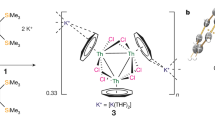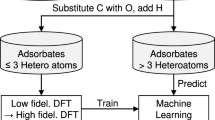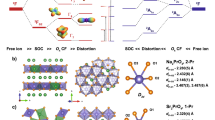Abstract
To the three requirements of a modern Periodic Table, as stated by A. A. Clifford1, must be added a fourth, namely, that it should be in as close accord as possible with chemical facts, and above all with the most fundamental of these, valency. It is only in Group IV that there is any strong chemical support for the sub-group arrangement. In other groups the only real justification is that the members of both sub-groups have the same maximum valency and some have the same characteristic valency. In Clifford's table even this slender justification is destroyed by the inclusion of Pr with Pa, Nd with U, Sm with Pu and Eu with Am, not merely in the same group but also in the same sub-group c. Advocates of ‘long’ forms of table are unlikely to be converted in this way.
This is a preview of subscription content, access via your institution
Access options
Subscribe to this journal
Receive 51 print issues and online access
$199.00 per year
only $3.90 per issue
Buy this article
- Purchase on SpringerLink
- Instant access to full article PDF
Prices may be subject to local taxes which are calculated during checkout
Similar content being viewed by others
References
Clifford, A. A., Nature, 184, 2012 (1959).
Mendeleef, D. I., “Faraday Lectures 1869–1928”, 167 (Chemical Society, 1928).
Author information
Authors and Affiliations
Rights and permissions
About this article
Cite this article
THISTLETHWAITE, W. Periodic Classification of Elements. Nature 186, 153–154 (1960). https://doi.org/10.1038/186153b0
Issue date:
DOI: https://doi.org/10.1038/186153b0



